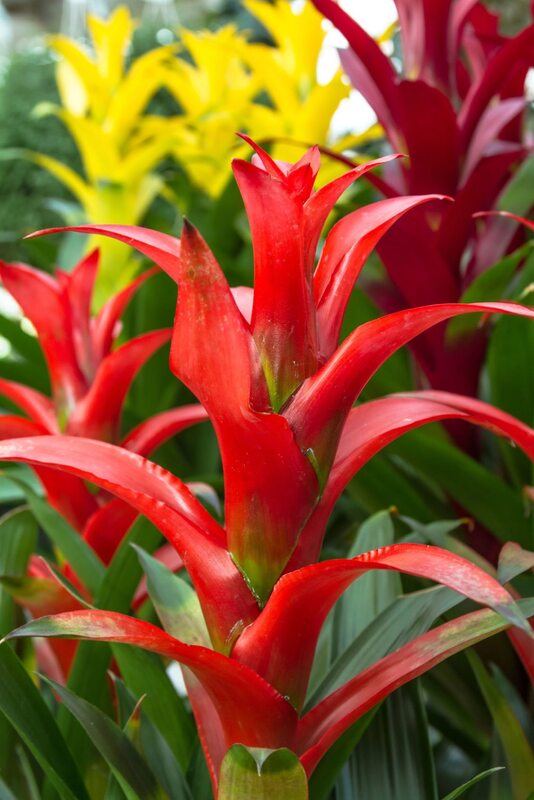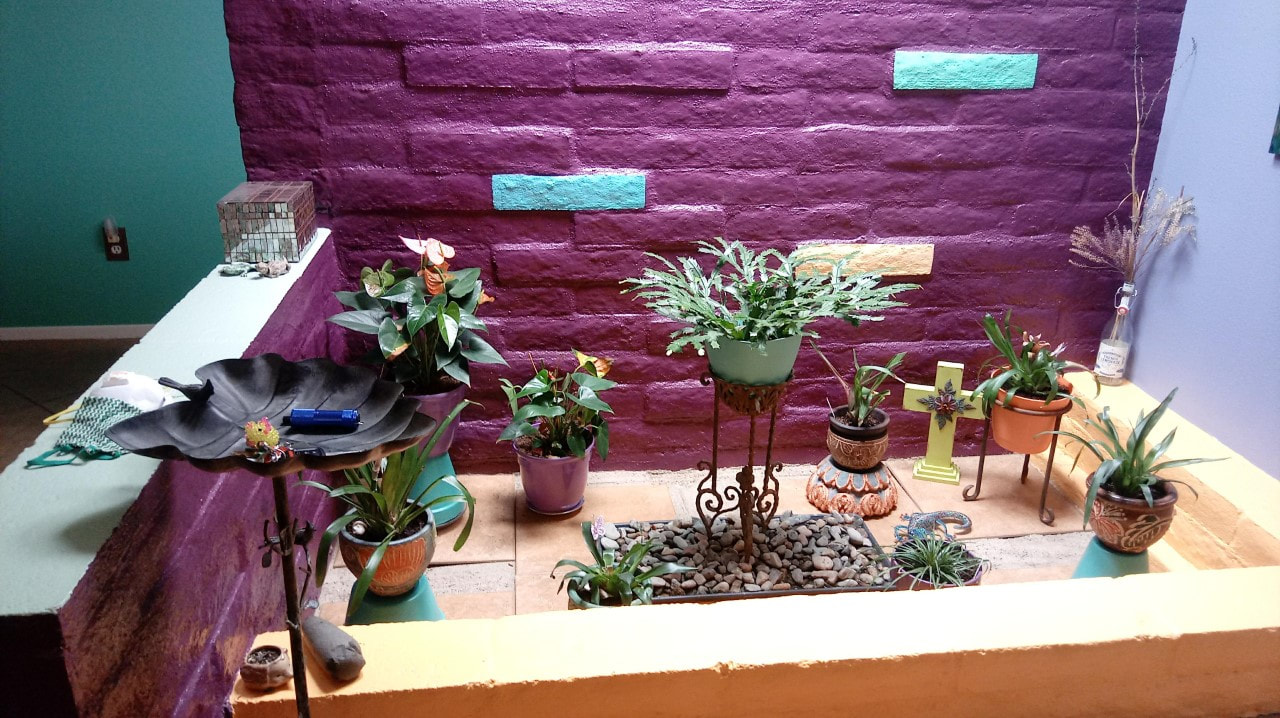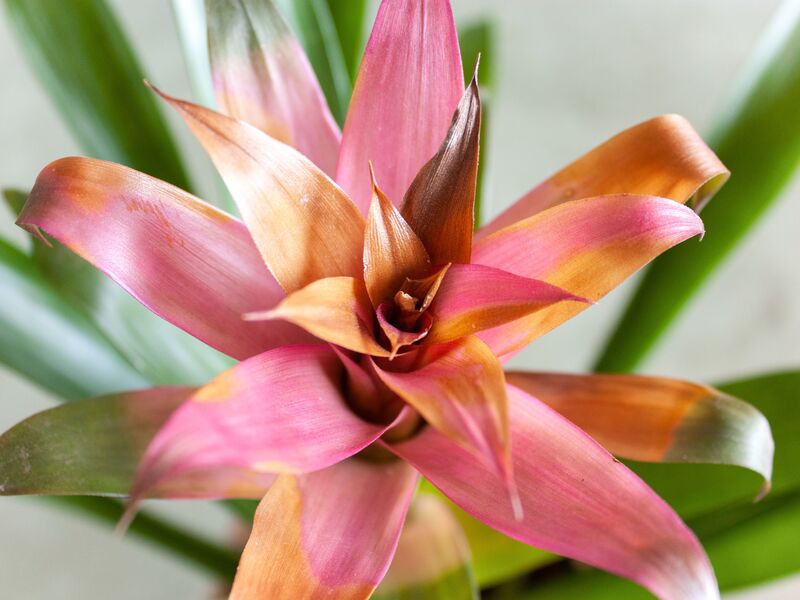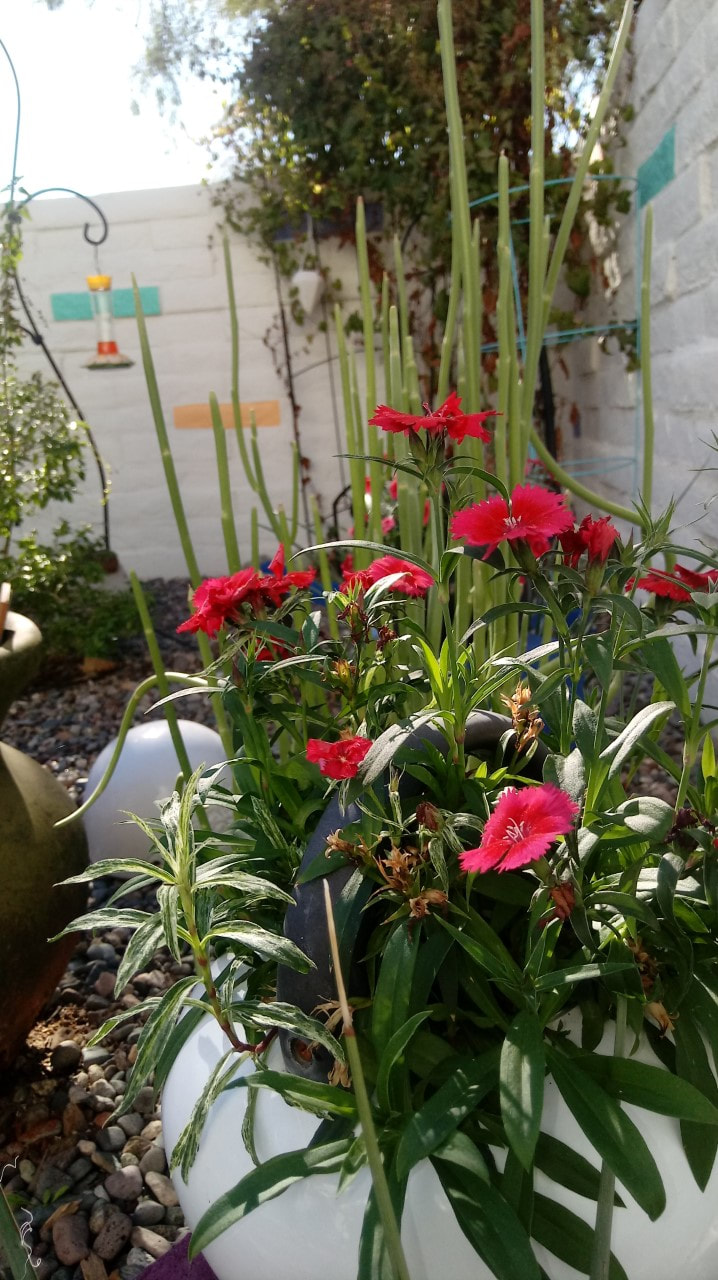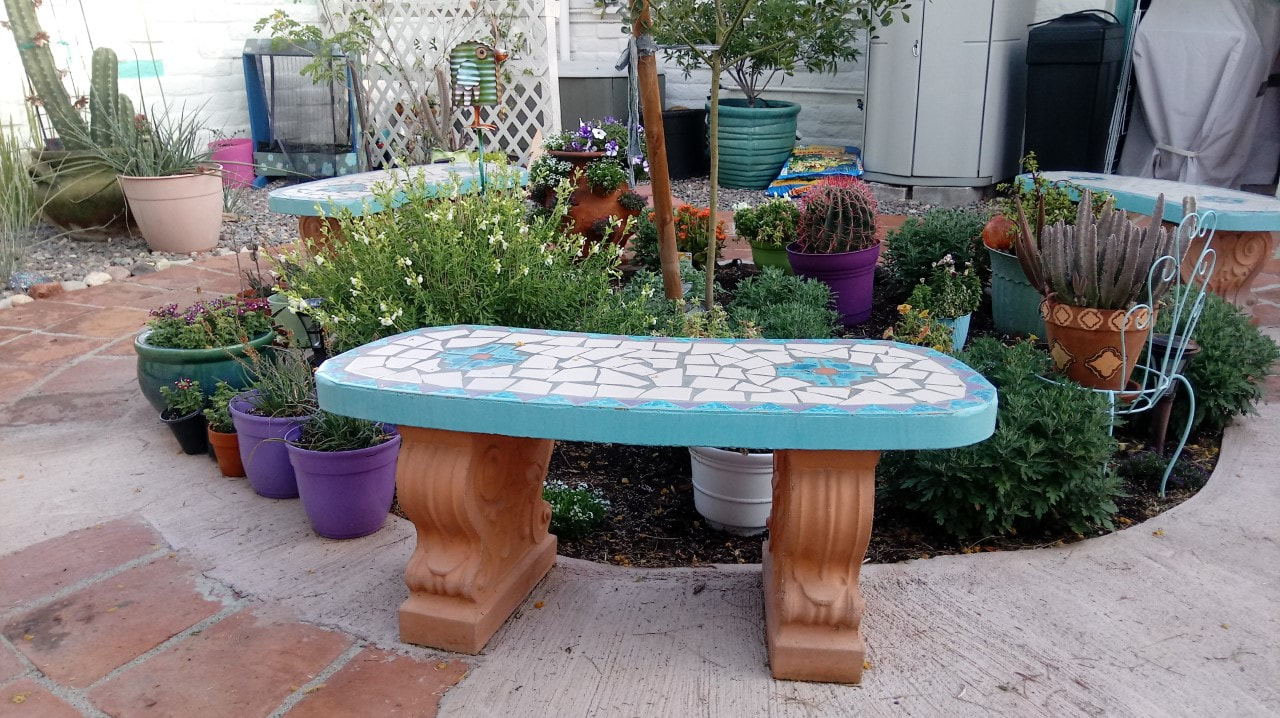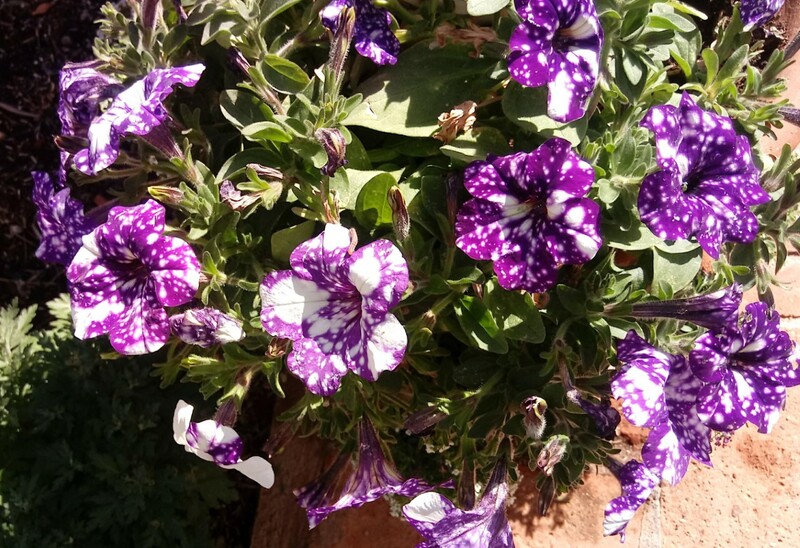Trees, Bromeliads, Anthuriums, and Grief
Pat Struck
In 2012, I lost my husband. We had been married 36 years. I was devastated. We had moved into our newly built home just eighteen months earlier and had done minimal landscaping. My reaction to my husband’s passing was to plant twenty-six trees around my house. Yes. Twenty-six trees. I planted desert willows, Pistache, grapefruit, palm, African Sumac, bottle tree, Chilean mesquite, Arizona Ash, shoestring acacia, and others. My family nicknamed me the “tree whisperer.”
I had trees delivered and I also hauled trees in my own car with branches and leaves scratching my arms and flying in my face. I called on my neighbors, friends, and family to help me dig holes with shovels and a jack-hammer. I had a neighbor install an extensive irrigation system. Once the trees were planted, I trimmed bottom branches, made water wells, and staked all of them. I cussed when the wind blew them over and had to be staked again. One tree in particular blew over more than once. The last time I staked that tree, it was during a storm and rain was pouring all over me and the wind was blowing so hard it was hard for us to stay upright. I remember pounding those stakes into the ground with fury while crying with frustration because I could not keep that tree from falling down.
I did not realize then that I was experiencing and living through the stages of grief as defined by Elisabeth Kübler Ross, a noted scholar of grief studies. Those stages are Denial, Anger, Bargaining, Depression, and Acceptance and I was, probably, living through three of those stages all at once. I didn’t know at the time that I was engaging in things that were good for me, like gardening. Grief can be reduced by getting your body moving. Activity can reduce stress, anxiety, sadness, and anger. I was certainly getting my exercise and moving my body!
My emotional well-being was being supported by time spent outdoors and communing with nature. Except for that ONE darn stubborn tree! My social interactions, another factor that affects grief, was supported by my neighbors, friends, and family who spent time with me planting those trees. My trees thrived, and I eventually learned how to live without my husband. These past seven plus years after my husband's passing have been scary, challenging, exciting, informative, and filled with other opportunities.
Yet, here we are today, still living through a pandemic. And it’s hard to stay positive. We are confined. A lot of people are sick and have died. Jobs have been lost. People are standing in food lines. Our economy is thrashed. Life is not normal. We cannot celebrate joyous occasions or hug those we love when there is such sadness and disappointment. We mourn our old lives.
I have again turned to plants to help me through this loss. I no longer live in the land of the twenty-six trees. I moved to be closer to my daughters on Tucson’s east side. My flower garden was beautiful last spring but was short-lived in the hot Tucson summer. As the heat increased, I worked on neglected projects inside my home.
In fact, it is grieving the loss of our lives before Covid-19 that has motivated me to work on my indoor atrium. And I have chosen to fill that atrium with bromeliads and anthuriums, plants I know nothing about.
Bromeliads and anthuriums are different from anything I have ever tried to grow. They have very specific watering and light needs. Their flowers grow inside of pups while the old flower dies off. My knowledge is limited, so far, but I am excited to grow these plants successfully and share their beauty. It is said that picking and smelling and caring for beautiful flowers and plants has a sensory benefit, which helps us to feel better in general. My emotional well-being is improved by spending time with these beautiful plants. And, by sharing their beauty with loved ones, even virtually, my social interaction is positively affected.
As we struggle to live through these pandemic times and mourn our collective losses, I urge you to acquire a dog, cat, plant, or other living creature to take care of, if you don’t already live with one (or more). Commit to some sort of physical exercise. Go outside and enjoy nature. Stop and smell the flowers and enjoy the beauty of trees and plants - anywhere - in a garden, a house, or growing randomly. Audrey Hepburn once said, “To plant a garden is to believe in the future.” We may have to continue our “social distancing” for now, but let’s find new and creative ways to stay positive, be sociable, and rise above our grief. Hands in the dirt means faith in the future.
I had trees delivered and I also hauled trees in my own car with branches and leaves scratching my arms and flying in my face. I called on my neighbors, friends, and family to help me dig holes with shovels and a jack-hammer. I had a neighbor install an extensive irrigation system. Once the trees were planted, I trimmed bottom branches, made water wells, and staked all of them. I cussed when the wind blew them over and had to be staked again. One tree in particular blew over more than once. The last time I staked that tree, it was during a storm and rain was pouring all over me and the wind was blowing so hard it was hard for us to stay upright. I remember pounding those stakes into the ground with fury while crying with frustration because I could not keep that tree from falling down.
I did not realize then that I was experiencing and living through the stages of grief as defined by Elisabeth Kübler Ross, a noted scholar of grief studies. Those stages are Denial, Anger, Bargaining, Depression, and Acceptance and I was, probably, living through three of those stages all at once. I didn’t know at the time that I was engaging in things that were good for me, like gardening. Grief can be reduced by getting your body moving. Activity can reduce stress, anxiety, sadness, and anger. I was certainly getting my exercise and moving my body!
My emotional well-being was being supported by time spent outdoors and communing with nature. Except for that ONE darn stubborn tree! My social interactions, another factor that affects grief, was supported by my neighbors, friends, and family who spent time with me planting those trees. My trees thrived, and I eventually learned how to live without my husband. These past seven plus years after my husband's passing have been scary, challenging, exciting, informative, and filled with other opportunities.
Yet, here we are today, still living through a pandemic. And it’s hard to stay positive. We are confined. A lot of people are sick and have died. Jobs have been lost. People are standing in food lines. Our economy is thrashed. Life is not normal. We cannot celebrate joyous occasions or hug those we love when there is such sadness and disappointment. We mourn our old lives.
I have again turned to plants to help me through this loss. I no longer live in the land of the twenty-six trees. I moved to be closer to my daughters on Tucson’s east side. My flower garden was beautiful last spring but was short-lived in the hot Tucson summer. As the heat increased, I worked on neglected projects inside my home.
In fact, it is grieving the loss of our lives before Covid-19 that has motivated me to work on my indoor atrium. And I have chosen to fill that atrium with bromeliads and anthuriums, plants I know nothing about.
Bromeliads and anthuriums are different from anything I have ever tried to grow. They have very specific watering and light needs. Their flowers grow inside of pups while the old flower dies off. My knowledge is limited, so far, but I am excited to grow these plants successfully and share their beauty. It is said that picking and smelling and caring for beautiful flowers and plants has a sensory benefit, which helps us to feel better in general. My emotional well-being is improved by spending time with these beautiful plants. And, by sharing their beauty with loved ones, even virtually, my social interaction is positively affected.
As we struggle to live through these pandemic times and mourn our collective losses, I urge you to acquire a dog, cat, plant, or other living creature to take care of, if you don’t already live with one (or more). Commit to some sort of physical exercise. Go outside and enjoy nature. Stop and smell the flowers and enjoy the beauty of trees and plants - anywhere - in a garden, a house, or growing randomly. Audrey Hepburn once said, “To plant a garden is to believe in the future.” We may have to continue our “social distancing” for now, but let’s find new and creative ways to stay positive, be sociable, and rise above our grief. Hands in the dirt means faith in the future.
BIO: I spent my first quarter-century as an apartment renter in Chicago, with never the right windows with adequate light for the few houseplants I tried to nurture. I spent one quite unhappy year in Southern Illinois, where I found joy tending to my neighbor’s quarter-acre vegetable garden and my landlady's prized iris and tulip beds. I spent hours there among the beautiful colors and scents of the flowers, the smells of the earth turned over, insects, earthworms, and birds fluttering around. Tomatoes, potatoes, carrots, cucumbers, and green beans were pulled from the ground and became dinner. My lifelong need to nurture plants was born. Gardening, to me, represents life itself. It seemed natural that I would turn to gardening during a time of grief. I’m retired now, living alone, where I tend to my outdoor and indoor beauties and look forward to post-COVID days to come.
